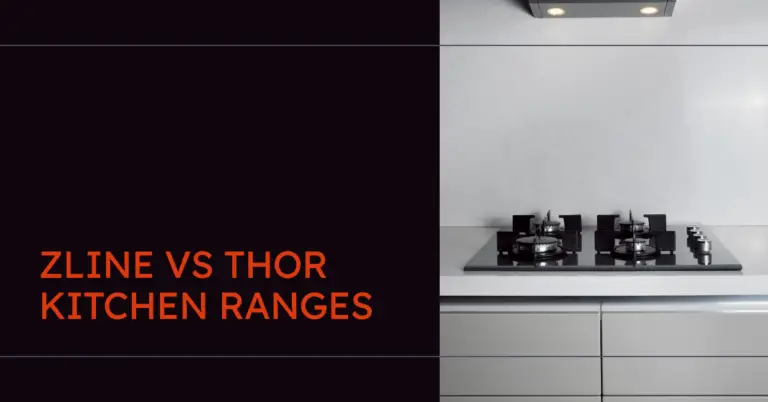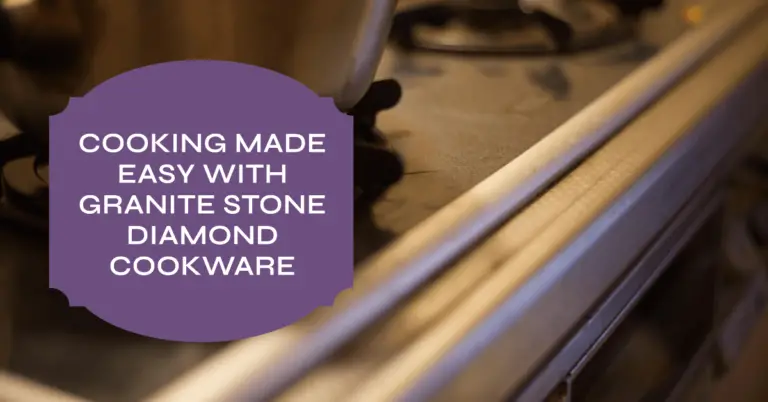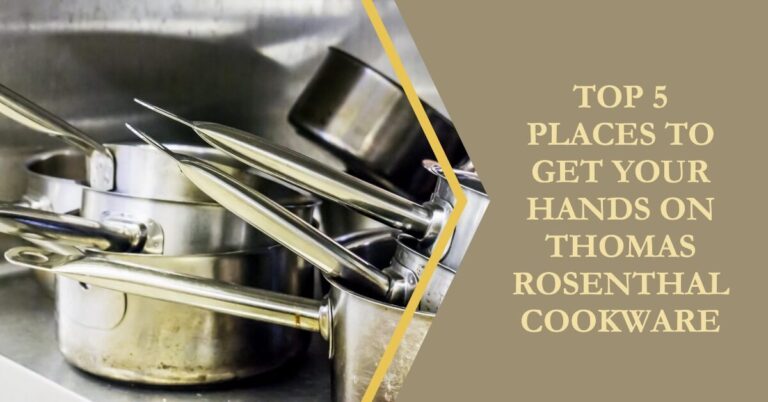Calphalon vs Cuisinart Cookware: Which Should You Buy in 2023?
When it comes to stocking your kitchen with high quality cookware, two of the most recognized and trusted brands available are Calphalon and Cuisinart. Both companies offer extensive lines of pots, pans, and other kitchen essentials that are designed for cooking performance and built to last.
But should you choose Calphalon or Cuisinart for your cooking needs? This detailed comparison of durability, heating properties, ease of use, warranties, prices, and other factors will help you decide which brand is the best choice for your kitchen.
Durability and Construction – Which Brand Lasts Longer?
One of the most important considerations when purchasing cookware is durability. You want pots and pans that will stand up to years of daily use without warping, denting, or other damage.
When it comes to sturdy construction, Calphalon comes out ahead. Calphalon uses heavy-gauge aluminum or stainless steel to construct their cookware lines. This makes them extremely durable and resistant to warping. Many of their pans feature hard-anodized aluminum, which is hardened through an electrochemical process to make it even more sturdy.
Cuisinart cookware tends to be slightly lighter weight, using thinner gauges of stainless steel or aluminum. While still durable for home use, Cuisinart pieces may be more prone to small dents or scratches over time.
Both brands rely on premium non-stick coatings to create a slick cooking surface. Calphalon uses their Double Non-Stick coating while Cuisinart has their Ceramica non-stick interior. Both provide excellent food release when new. However, Calphalon’s coating may have better long-term durability, retaining its non-stick power for years longer according to some customer reviews.
When it comes to sturdy, warp-resistant construction that will last through years of cooking, Calphalon has a slight edge. Their hard-anodized aluminum and thick stainless steel cookware stands up better to heavy use and high heat.
Heating Properties – Which Cooks More Evenly?
For the best cooking experience, you want cookware that provides even, consistent heating without hot spots. This allows you to produce evenly browned and crisped food, not overcooked in some spots and underdone in others.
When it comes to heat conduction, the metals used make a big difference. Both brands rely primarily on aluminum and stainless steel, often combining them in their designs.
Aluminum is valued for its excellent conductivity and responsiveness. It heats up quickly and evenly. Stainless steel takes longer to heat up but holds temperature very evenly once hot. The thickness of the metal also impacts heating – thicker aluminum and stainless steel hold heat better after initially preheating.
Cuisinart’s Heat Surround technology uses a ring of solid aluminum encircling stainless steel cookware walls. This pulls heat up the sides more consistently. Some Cuisinart models also have a concentric ring on the base to avoid hot spots.
Many Calphalon pans are hard-anodized aluminum, providing exceptional conductivity and evenness. Their triple-ply stainless steel cookware combines an aluminum core between stainless walls.
Overall, Cuisinart tends to offer slightly better heat control and fewer hot spots thanks to their clever engineering. But both brands perform well when it comes to even heating and reactivity.
Ease of Use and Cleaning
Convenience is a key consideration with any cookware purchase. You want pots and pans that are easy to use while cooking and simple to clean up afterwards.
When it comes to non-stick performance, both Calphalon and Cuisinart deliver excellent food release and easy cleanup when their cookware is new. However, over time many buyers report Calphalon maintaining its non-stick powers better than Cuisinart, requiring less oil and staying slicker for more years.
In terms of cleaning, both brands offer cookware that is officially dishwasher safe for convenience. However, hand washing is always recommended to extend the non-stick life of any pots or pans.
One difference is that Calphalon cookware tends to be a bit heavier than comparable Cuisinart models. The thick aluminum and steel construction adds heft. Cuisinart cookware is usually slightly lighter for easier maneuverability.
Both brands design their cookware with ergonomic handles that stay cool on the stovetop. Comfort and control while cooking is excellent across both product lines.
For most home cooks, Calphalon and Cuisinart are equally convenient to use and simple to clean. The lighter weight of Cuisinart gives it a minor advantage for ease of handling.
Cooking Performance
At the end of the day, cookware needs to perform where it counts – on the stovetop and oven. How does food look and taste when prepared in Calphalon and Cuisinart?
Both brands allow you to successfully sear, brown, simmer, boil, and other cooking techniques. Meats get crispy and caramelized nicely while maintaining juiciness. Delicate foods like eggs and pancakes slide out of the pans easily when cooking with a bit of fat.
When it comes to temperature control and reactivity, Cuisinart may have a slight performance edge. Aluminum heats very responsively while their steel holds heat steady, making it easier to adjust temperature precisely.
Calphalon’s hard anodized and stainless steel cookware performs very well too, but some cooks report the thicker metal can make temperature adjustments a bit slower.
Overall, both Calphalon and Cuisinart offer excellent cooking performance across a wide range of dishes and cooking methods. For most home chefs, there will be minimal discernible difference between using Calphalon vs Cuisinart pots and pans.
Style and Appearance
While not as critical as performance and durability, a cookware set’s appearance can be important too. The style and visual appeal of your pots and pans should suit your kitchen decor and personal tastes.
Both Calphalon and Cuisinart offer cookware in a variety of contemporary, minimalist color choices. Calphalon sets are always matched while Cuisinart allows you to mix and match pans across lines.
Calphalon Colors:
- Classic stainless steel
- Black hard anodized aluminum
- Grey non-stick finishes
- Signature gold exterior stainless
Cuisinart Colors:
- Classic stainless steel
- Black
- Red
- Navy Blue
- White
- Chocolate
- Light blue
When it comes to aesthetics, choosing between the two brands comes down to personal preference. Both make their pots and pans visually appealing for stovetop cooking and serving meals at the table.
If you want cookware that matches exactly across a set, go with Calphalon. For more flexibility in colors, Cuisinart allows you to customize your collection.
Warranties and Brand Reputations
With any major kitchen purchase, you want the assurance of a strong product warranty should any defects arise. Both Cuisinart and Calphalon back their cookware with impressive warranties.
Cuisinart offers a lifetime limited warranty that covers defects in materials and workmanship. Calphalon provides a full lifetime warranty on all their cookware as well. Both pledge to repair or replace any cookware found to be defective.
In addition to great warranties, these are two of the most recognized and trusted cookware brands. Calphalon has been manufacturing quality pots and pans since 1963. Cuisinart is famous for food processors but has offered acclaimed cookware since the 1990s. Both have outstanding reputations.
When it comes to assurances like warranties and brand reputation, it’s a wash between Cuisinart and Calphalon. Cookware from either brand comes highly backed with great customer service.
Budget and Value Comparison
A final factor to weigh is the cost and value proposition of Calphalon versus Cuisinart cookware. Which gives you more for your money?
As renowned premium cookware brands, neither is considered a budget option. That said, Cuisinart tends to be slightly less expensive across comparable product lines.
For example, a 10 piece Calphalon Premier Space Saving set costs around $300 at full price. A similar 10 piece Cuisinart Multiclad Pro set costs $270.
Both go on sale periodically – you can often find 20% to 40% off retail prices if you shop wisely and time purchases right. This applies to both brands.
When it comes to entry-level options, the Cuisinart Chef’s Classic line provides very good value for money starting around $100 for a starter set. Calphalon’s Contemporary line is similarly priced but not quite as well reviewed.
For most shoppers, Cuisinart delivers an edge for budget-friendliness while still delivering excellent quality and performance. But bargains can be found across both product ranges.
Conclusion: Calphalon vs Cuisinart – Which is Best for You?
So when considering Calphalon vs Cuisinart, which brand comes out on top?
For durability and construction, the slight edge goes to Calphalon and their hard anodized aluminum cookware which stands up better over decades of daily use.
For heating properties and cooking performance, Cuisinart wins thanks to their clever heat circulation designs leading to fewer hot spots.
Ease of use and cleaning are close between the two, with Cuisinart a bit lighter weight for handling convenience.
Styles and aesthetics are a personal choice – both offer good variety and visual appeal.
Warranties and reputations for both companies are outstanding.
Budget and value gives Cuisinart the advantage, offering very good quality at a bit lower prices.
For most home cooks, Cuisinart delivers the best overall combination of performance, features, and value. But Calphalon is a very close second, ideal for those who prioritize Made in USA construction and maximum sturdiness.
Use this comprehensive Calphalon vs Cuisinart cookware comparison to decide which brand’s strengths line up best with your cooking needs and budget. Either way, you’ll end up with quality cookware that should serve your kitchen well for many years.



